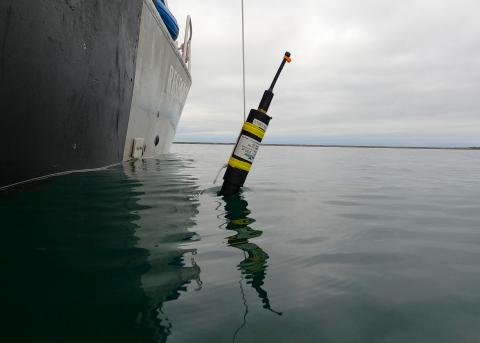Past Research
Triton Field Trials
The Triton Field Trials (TFiT) advanced knowledge of potential environmental impacts associated with marine energy devices by researching and providing recommendations for environmental monitoring technologies and procedures to the marine energy industry. Results and recommendations were published in the Journal of Marine Science and Engineering special issue titled, “Technology and Methods for Environmental Monitoring of Marine Renewable Energy.” TFiT’s primary research focus was to address the main stressors of concern as identified in the 2020 OES-Environmental State of the Science Report. TFiT research topics include:
- Changes in habitat
- Collision risk
- Underwater noise
- Electromagnetic fields
- Marine energy predictive modeling
The TFiT research sparked an analysis of spatio-temporal considerations for environmental monitoring, life-cycle assessments for marine energy, and how communications can support marine energy projects. As part of TFiT, anthropogenic light in the marine environment was also identified as a potential stressor for arrays of marine energy devices that could be proactively addressed and mitigated. Learn more here.

Support of Department of Energy-Funded Technology Development Projects
Triton worked with project awardees funded through a Department of Energy funding opportunity announcement to support the development of innovative environmental monitoring technologies and to advance their technical readiness level for in-water deployment. Projects included:
- University of Washington Drifting Acoustic Instrumentation SYstem (DAISY)
- BioSonics Inc.
- Woods Hole Oceanographic Institution Electromagnetic Field Detection
- University of Washington’s 3rd Generation Adaptable Monitoring Package (3G-AMP)
- Integral NoiseSpotter
- Integral Benthic Habitat Mapping
Fish Mesocosm Study
The Fish Mesocosm Study was a collaboration between PNNL, the University of Washington, the University of Alaska Fairbanks, and the University of Maine. The purpose of the study was to quantify fish interactions with tidal turbines and to observe their behavior around devices in a controlled field environment. During the pilot study, researchers used a third-generation, adaptable monitoring package developed by the University of Washington to record the movements of tagged fish in Sequim Bay. The package was equipped with sonar, acoustic cameras, hydrophones, and a classification system. Study results verified a low probability of fish interaction with this device.
Learn more about this study: Fish Mesocosm Study

Anthropogenic Light in the Marine Environment
Anthropogenic light can disrupt the physiology and behavior of wildlife in marine and coastal environments. In partnership with lighting experts at Solid State Lighting Services, Inc., the Triton team investigated potential interactions of animals and light associated with marine energy devices. The goal was to provide recommendations to industry on ways to reduce light impacts on local wildlife populations while still maintaining the necessary safety and navigation requirements.
Learn more about this project: Anthropogenic Light in the Marine Environment.

Collision Risk Data Collection and Data Processing
Triton’s Collision Risk Data Collection and Data Processing project aimed to decrease uncertainty and cost related to animal interaction studies, particularly for stressors like collision risk. The research focused on improving data collection methods and automating underwater video and acoustic camera analyses to improve algorithms required for effective observations of fish/turbine interactions and advance the understanding of potential collision risk.
Learn more about this project: Collision Risk Data Collection and Data Processing
Marine Wildlife Detection and Tracking
The ability to detect and monitor marine animals using unoccupied aerial platforms, such as a tethered balloon system, provides unique opportunities for researchers to collect data about whales and other marine wildlife from the air for longer durations. Through the Marine Wildlife Detection and Tracking task, Triton investigated a suite of sensor technology applications that detect and track animals in and above the water.
Learn more about this project: Marine Wildlife Detection and Tracking Project

Flow Noise Mitigation
The Triton team performed research that addressed the need to reduce flow noise that may contaminate underwater sound measurements caused by water flowing through a hydrophone. Through this research, Triton developed and tested various flow shields to reduce the effects of flow noise from turbulence in the energetic flow around hydrophones in a range of environmental conditions.
